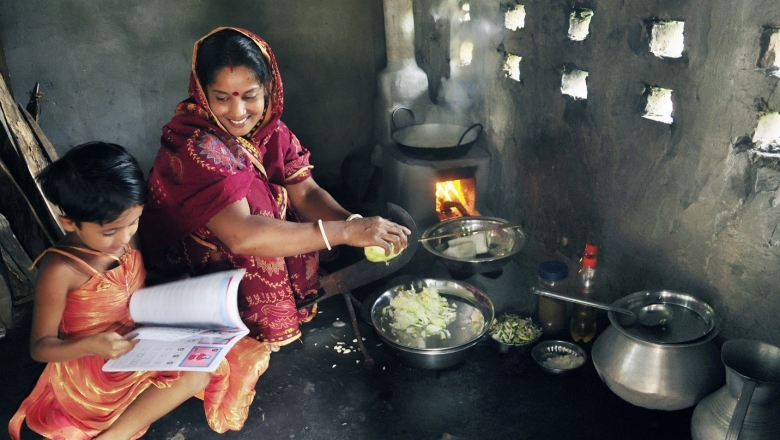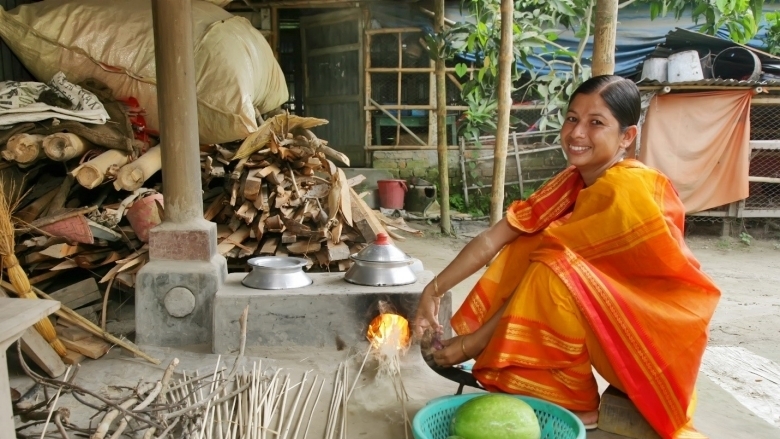Results
Since 2012, the Second Rural Electrification and Renewable Energy Development Project has helped more than 5.4 million people in remote rural areas gain access to electricity through solar home systems (SHS). They would otherwise depend on expensive kerosene lamps, which are a source of indoor air pollution. With an SHS, a household can operate three to four lights and a television for at least four hours a day. The project has also supported solar mini-grids, solar irrigation pumps, improved cookstoves and biogas digestors to provide access to clear energy solutions to 1.9 million people.
From 2012 to 2020:
- 7.3 million people in remote rural areas have access to clean and renewable energy.
- More than 60 percent of project beneficiaries are women.
- Access to electricity in Bangladesh has increased 12 percent.
- 26 solar mini-grids have been installed, providing electricity to over 8,000 shops, businesses, and households.
- 1,130 solar irrigation pumps have been installed, benefitting 35,000 farmers.
- 1.8 million improved cookstoves have been sold across the country.
Bank Group Contribution
The original RERED II Project, financed with a $155 million credit from the International Development Association (IDA), was approved in September 2012. Two additional financings were approved in 2014 and in 2018 in the amount of $78.4 million and $55 million, respectively. The World Bank’s multi-donor trust funds including Energy Sector Management Assistance Program (ESMAP) and Asia Sustainable and Alternative Energy Program (ASTAE) also provided resources to supplement the Bank’s implementation support.
Partners
The Infrastructure Development Company Limited (IDCOL) is the project’s key implementing agency. IDCOL was established by the Government of Bangladesh in 1997. IDCOL plays a major role in bridging the financing gap for developing medium- to large-scale infrastructure and renewable energy projects in Bangladesh. IDCOL has played a key role in facilitating coordination among the World Bank and development partners and channeling multiple streams of development finance effectively through its renewable energy programs under the project.
The Bank has helped mobilize financing from other development partners, including the Global Partnership on Output Based Aid (GPOBA) for $30 million, the United States Agency for International Development (USAID) for $7 million, the Bangladesh Climate Change Resilience Fund (BCCRF) for $10 million, and the Green Climate Fund for $20 million.
Moving Forward
The project continues to support the Government’s goal to achieve universal access to electricity by 2021 and 100 percent coverage of improved cookstoves by 2030 as envisioned in the National Action Plan for Clean Cooking. In line with the rapid expansion of electricity grid in the country, the project will focus more on providing solar irrigation pumps and clean cooking solutions through improved cookstoves and biogas digestors, building on the successful implementation model of engaging with a strong network of local entrepreneurs and rural supply chains for a sustainable market-driven approach.

